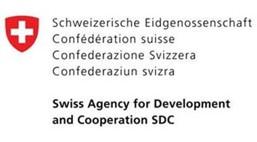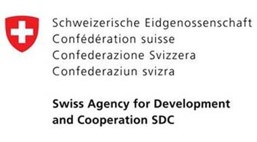“Gender-Based Corruption is present at the Workplace in Rwanda” – New TI-RW’s Survey

On 28th September 2022, Transparency International Rwanda (TI-RW) launched the findings of the Survey on "Gender-Based Corruption (GBC) at the Workplace" in Rwanda. The survey reveals that GBC is present at the workplace with the majority of respondents (79.70%) testifying that they have heard about gender based corruption in the workplace in the previous 12 months.
The launching event brought on board relevant stakeholders from the public and private sector, development partners, civil society organizations, and media practitioners.
“In the light of the existing clear legal framework & high political will to curb corruption, we surely need all actors to collaboratively take actions to fight gender based corruption because it exists in our community & its effects are enormous,” said TI-RW Chairperson Marie Immaculée Ingabire in her opening remarks.
The Guest of Honor, RoseRwa buhihi, Chief Gender Monitor called upon all stakeholders to maximize their efforts to fight against gender based corruption. “Our collaboration is vital in this endeavor. All institutions should have internal mechanisms and make constant inspections,” she added.
In his remarks, Jimmy Gahima, Deputy Program Manager of the Norwegian People’s Aid (NPA) underscored that all actors should harmonize their collaboration to sensitize citizens to blow the whistle in case they witness Gender Based Corruption cases.
"NPA and TI-RW will continue to support anti-corruption efforts and the citizens of Rwanda in general in the national aspirations of building a Rwanda free of corruption," Gahima added.
A quick look at the research findings
The findings of the study show that GBC is present in the workplace in Rwanda. According to the findings, the majority of respondents (79.70%) said they have heard about gender based corruption in the workplace in the previous 12 months. Over 75% also believe that women are the most vulnerable to various forms of gender-based workplace corruption.
The majority of respondents in the Focus Group said that they understand what Gender-based corruption (GBC) means, confirmed its presence in their workplaces and pointed out the various gender based corruption behaviors that are common in their workplace.
A sizable proportion of respondents (more than 90%) believe that gender based corruption behaviors that are prevalent in their workplace are inappropriate and unacceptable, while less than 10% believe that such behaviors do not matter and are acceptable.
The report underpins that the majority of GBC victims (39.3%) choose to ignore it and remain silent. Other respondents report to close colleagues at work (20%), their families (15%), their company management (15%) ant-corruption bodies (9.4%) while 1.6% accept it.
Some reasons why some people fail to report gender-based corruption in the workplace include the fear of retaliation, lack of sufficient evidence used by victims to file complaints to the appropriate authorities, the perception that reporting the case would change nothing. Therefore, people still fear reporting cases of gender based corruption for further investigations.
Many people point to causes such as lack of transparency in recruiting and promoting employees and providing other staff benefits, lack of self-confidence and poverty or difficult family living conditions of vulnerable groups with a higher risk of GBC. Some other causes identified by respondents include lack of or limited knowledge about employers’ rights and labor law, and lack of transparency in evaluating staff performance.
With reference to the rate of GBC prevalence in workplace, the majority of respondents perceived that gender-based corruption in the workplace is at a very low level, in public, private and CSOs. This was confirmed by respondents ranging from 40% to 50% of both public and private institutions, and slightly more than 58 percent of those in CSOs.
According to statistics, the private sector has the highest number of respondents perceiving that gender-based corruption is present in their workplace (more than 50%). Higher learning institutions come in the second place (42.6%) while 20% perceive that gender-based corruption behaviors are present in CSOs, judicial organs, secondary schools, local governments, and other ministries-affiliated institutions.
The study involved a total of 1,200 respondents who include 405 employers from public institutions, 629 employees from private institutions, and 166 employees from CSOs/NGOs.
In terms of methodology, the study adopted both qualitative and quantitative methods for this particular assignment. The qualitative methods were used in reviewing various related documents, focus groups discussions, and interviewing key informants. In terms of the quantitative approach, a structured questionnaire was distributed to employees from public and private institutions and CSOs. The questions were developed in accordance with the study’s objectives.

















